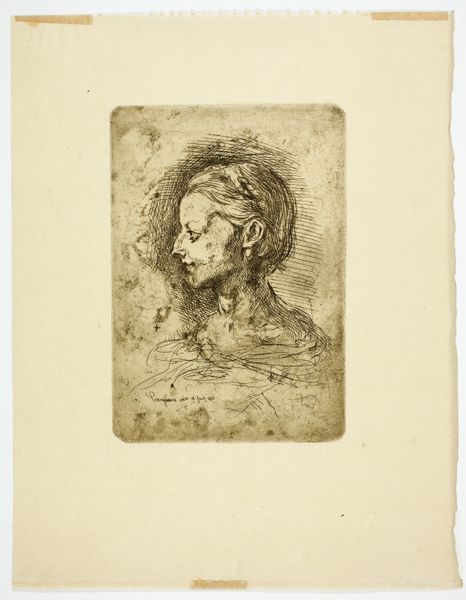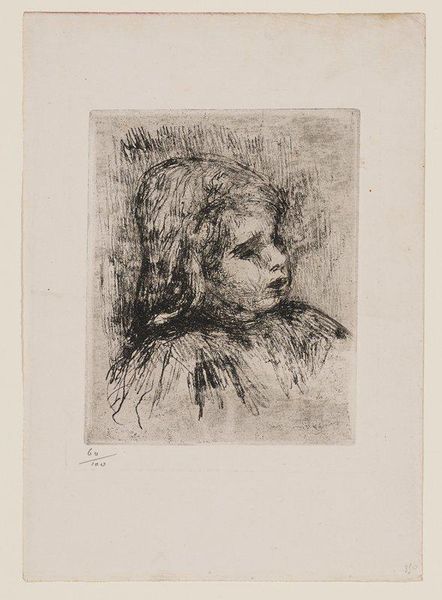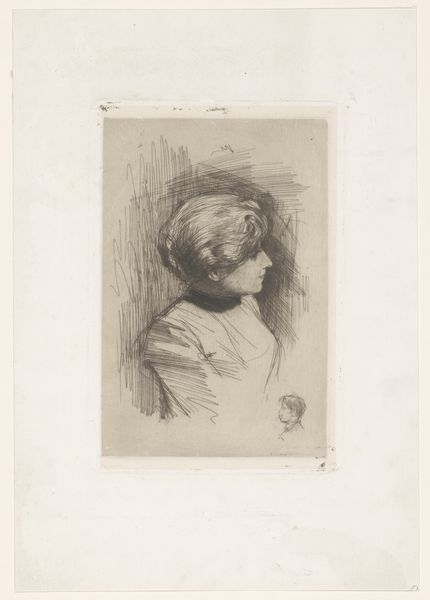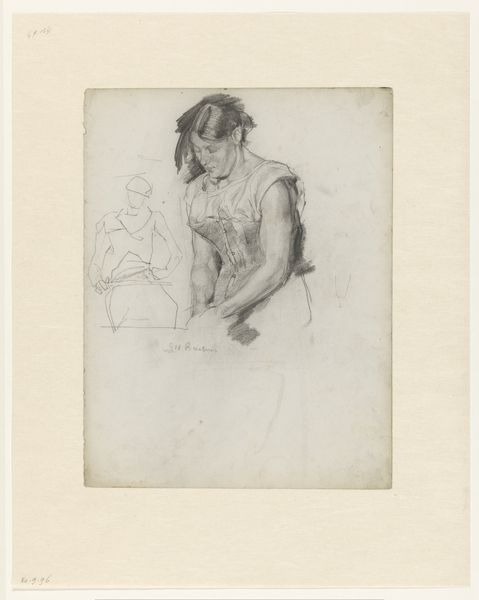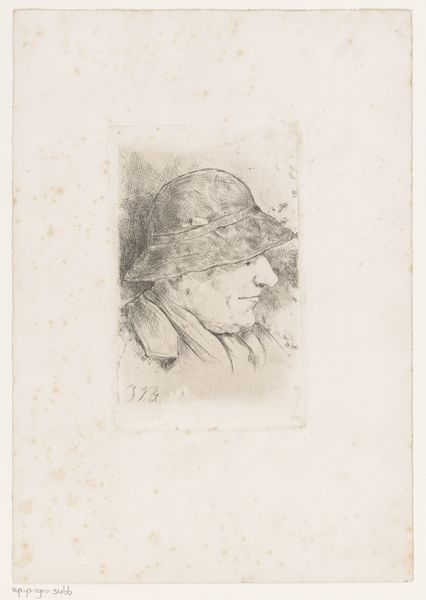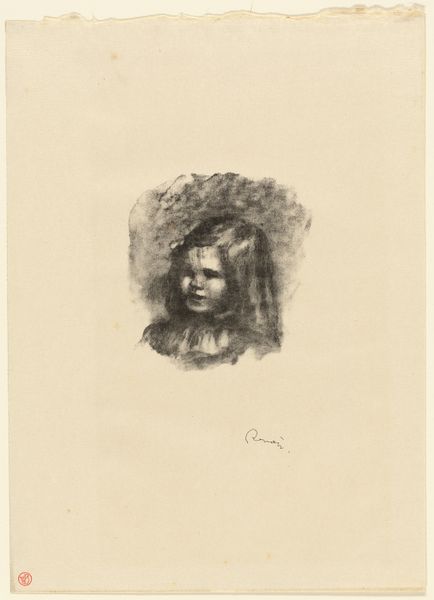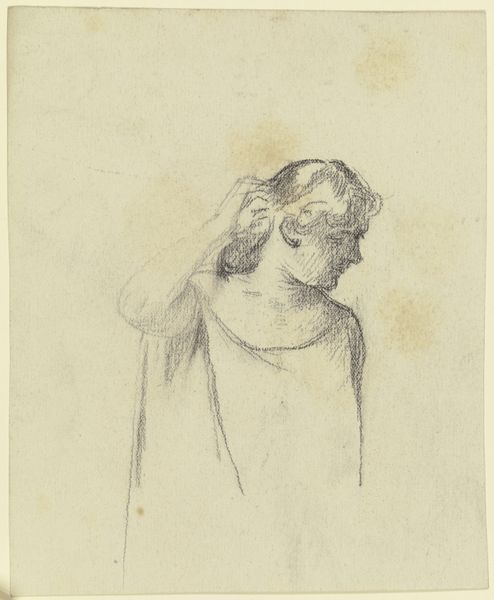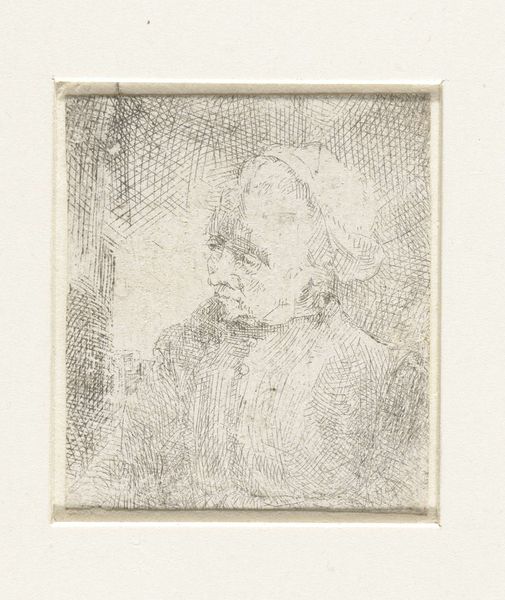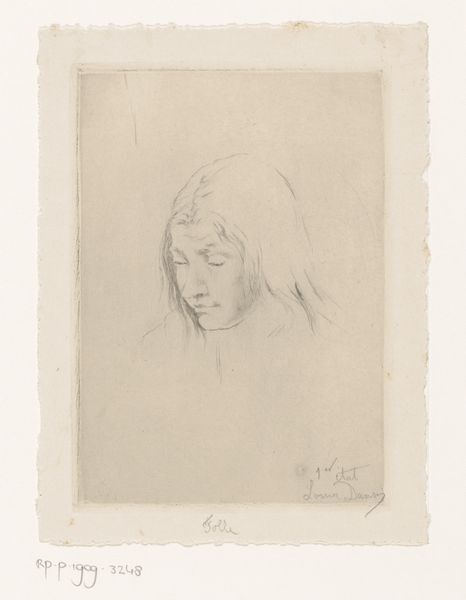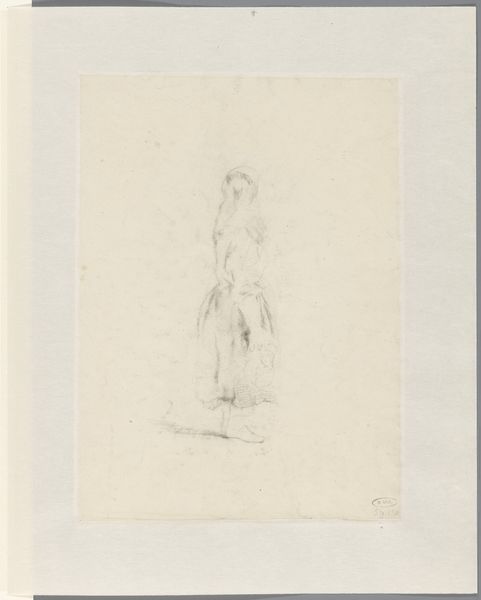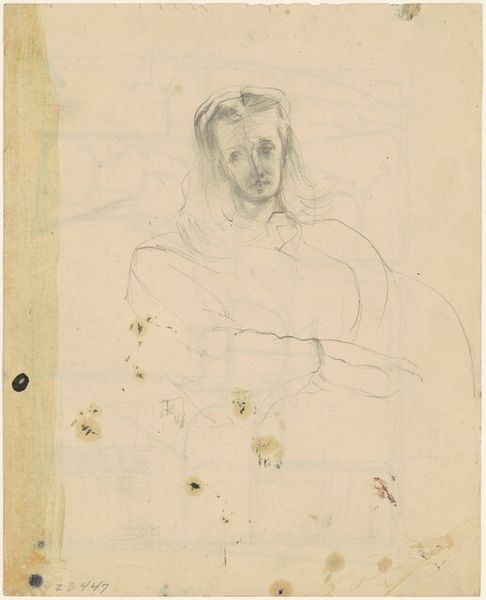
Claude Renoir Turned Three-Quarters to the Left c. 1908
0:00
0:00
Dimensions: 137 × 126 mm (image); 137 × 126 mm (plate); 402 × 260 mm (sheet)
Copyright: Public Domain
Editor: Here we have Renoir’s etching, "Claude Renoir Turned Three-Quarters to the Left," made around 1908. There's such a delicate, almost ethereal quality to it. The lines are so faint; it’s like catching a fleeting glimpse of his son. What do you see in this work? Curator: Well, it whispers of tenderness, doesn't it? A father's gentle observation of his child. You know, Renoir was deeply interested in capturing light, even in his etchings, he attempts to show it reflecting on the skin, and catching in the hair of the child. It feels incredibly intimate because it is a study of the person nearest to him. Have you noticed the unfinished quality? Editor: Yes, it’s more like a sketch. There’s so much empty space. Curator: Exactly! The emptiness heightens the feeling of a private moment, just between father and son, now immortalized on paper. For me, the seemingly incomplete quality draws attention to the parts of the composition Renoir felt most necessary, those delicate areas of line describing Claude's features. Why do you think he chose etching? Editor: Perhaps it allowed for a certain softness, compared to, say, a charcoal drawing? Something more suggestive, more "Impressionistic," if I dare use the term! Curator: You dare indeed! But you’re right! There's a fluidity, and almost sketch-like feeling, to etching that perfectly suited Renoir’s style. He's not just depicting Claude; he's capturing an impression of him, of childhood itself. It reminds me a little of snapshots capturing ephemeral moments. What a legacy for his child, Claude, who would also later become an artist in his own right, to inherit his father’s works! Editor: It makes you wonder what Claude thought of it later in life. It's incredible how much emotion can be conveyed with so few lines. I definitely see more depth after our conversation! Curator: It’s all in the power of suggestion, and a father’s love, etched in time!
Comments
No comments
Be the first to comment and join the conversation on the ultimate creative platform.
